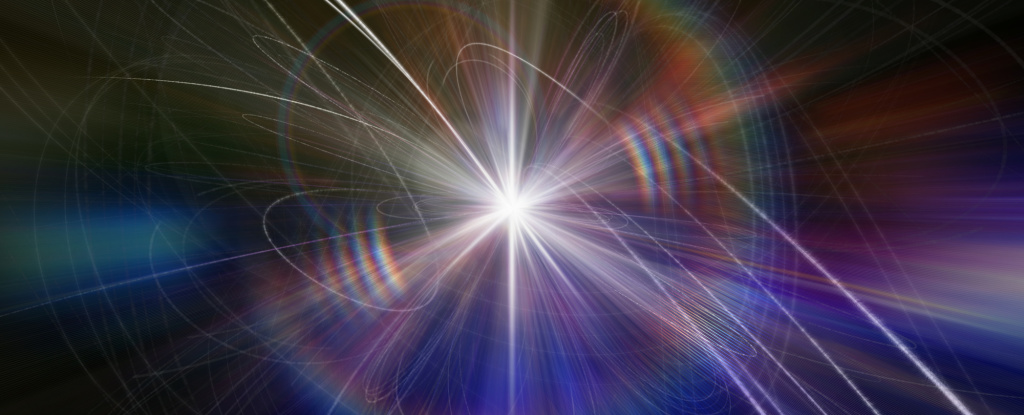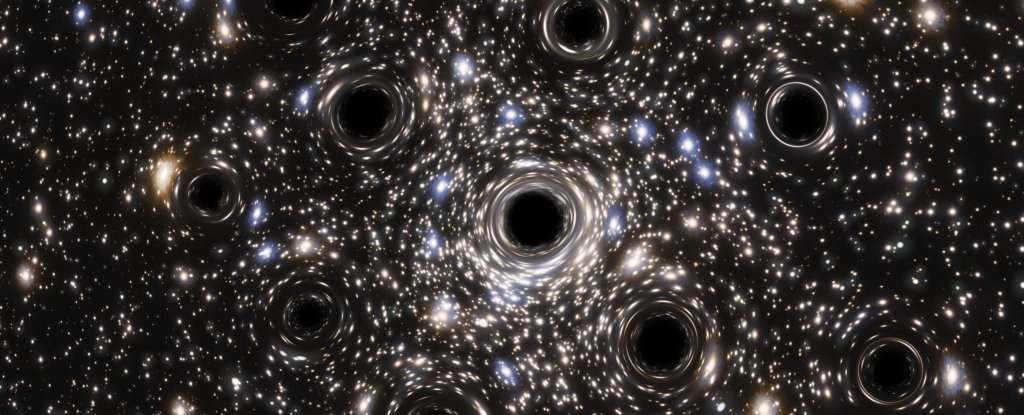When streams of ultra-fast protons collide, a Higgs boson might pop into existence for the briefest instant before decaying into lighter particles.
In that moment, physicists can work backwards to estimate the mass of what could be the most important and yet most elusive particle in the Standard Model.
Having crunched the numbers on a mind-boggling number of proton collisions using the Large Hadron Collider (LHC), physicists now have the most precise figure yet for this all-important property.
First reported in July, the latest measurements are from a four-year period where about 9 million Higgs boson particles were predicted to have been produced at the LHC, the world’s largest and most powerful particle collider. But only a tiny fraction of those Higgs were experimentally observed.
Still, it was enough for an international team of researchers working on the ATLAS experiment, one of two detectors at the LHC, to obtain the most precise measurements yet of the Higgs boson‘s mass.
The Higgs is quite a perplexing particle: It arises out of a quantum field that emanates throughout the Universe, giving other fundamental particles their mass.
While the masses of other particles in the Standard Model of physics can be deduced from theory, physicists need to grope relatively blindly through experimentation to determine the Higgs’ mass.
Having a precise measurement is important given the measurement’s importance in understanding other particle interactions.
Its own relatively large mass has made observing the Higgs boson quite demanding, and yet current measurements of the Higgs’ mass are three times lighter than models suggest, according to predictions.
While those discrepancies aren’t yet resolved, these latest measurements refine our best estimates of the Higgs boson’s mass, which influences how it interacts with other particles and with itself.
The researchers combined several mass measurements based on the particle’s decay with more precise calibrations, to obtain a Higgs boson mass of 125.11 gigaelectronvolts (GeV) with an uncertainty of 0.11 GeV. That’s down from a mass of 125.35 GeV and a precision of 0.12 percent in 2019.
“This result currently represents the most precise measurement of the Higgs boson mass, reaching a 0.09 percent precision on this fundamental quantity,” members of the ATLAS collaboration write in their paper.
Importantly, the team’s estimate reduces the statistical and systematic uncertainty of the Higgs’ mass another notch – uncertainty which previously left considerable wiggle room for interpretation of the data.
Having more precise measurements helps physicists test predictions of the Standard Model of Particle Physics and detect possible deviations – if they exist.
Just last year, for example, the most precise measurement ever made of the W boson’s mass exposed a few possible fissures in the Standard Model, which remains our best working model of fundamental particles and their interactions. The W boson’s mass was out by seven standard deviations from the model’s prediction, a result no one expected.
Deviations like this hint at some new or unknown phenomenon beyond the Standard Model, which doesn’t explain everything about the Universe. However, precise doesn’t mean accurate either; it could be that the measurements are wrong, not the theory.
As for the Higgs boson, despite these latest measurements, physicists haven’t pinned down its properties either – not even close.
For one, the Higgs boson doesn’t actually appear with the same mass each time, rather it has a spread of possible masses, which physicists call its ‘width’. In 2022, scientists refined their estimates of the Higgs boson’s ‘width’ with greater precision than ever before.
But by getting finer and finer estimates of the Higgs’ mass, physicists are edging closer to answering some difficult questions about the enigmatic particle, such as: Does the Higgs boson interact with itself as the Standard Model predicts it should? And how does it couple to other particles?
Even wilder wonderings include: Are there different versions of the Higgs that we’ve not yet discovered, and could the Higgs be a portal to understanding dark matter, the mysterious stuff that fills the Universe, but which no one has ever seen?
Of course, physicists are still on the hunt for other particles that might explain the Higgs boson’s incredible lightness, an anomaly that has dogged them since the Higgs was discovered in 2012.
With recent upgrades to the LHC now complete, designed to increase the energy and intensity of its particle collisions, and more upgrades planned in the future, who knows what will emerge?
The study has been published in Physical Review Letters.





